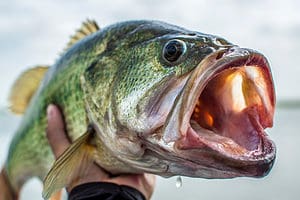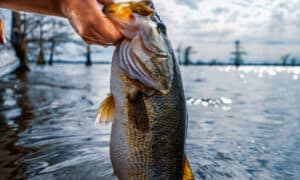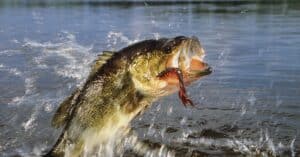
Michael Geary, a former police officer, enjoyed his retirement by doing a lot of fishing on Lake Mead. Formed by the Hoover Dam, Lake Mead is the largest reservoir in the United States in terms of water capacity. The southern section of the lake is situated east of Las Vegas and Henderson and straddles the Nevada/Arizona border. The lake stretches north near Valley of Fire State Park. The northern section of the lake was the setting for the largemouth bass catch that landed Geary in the Nevada state record book.

The Overton Arm of Lake Mead was the setting for the state-record largemouth bass catch in 1999.
©Peter Hermes Furian/Shutterstock.com
Catching a Record Largemouth
On the morning of March 8, 1999, Geary was fishing in Lake Mead’s Overton Arm. He was throwing a gold spinner bait in nine-foot-deep water. A fish hit it hard when he cast his lure to the shady side of a submerged brush pile. As soon as he set the hook, Geary knew it was a good fish. He told the Las Vegas Sun, “I thought it was a big striper by the way he hit the lure. It only took me two or three minutes to get him close to the boat. When it swirled, I could see the tail, and I knew I had a big largemouth bass.”
After bringing the fish into the boat, Geary placed it in the live well and kept fishing, adding a few more fish to his haul before heading for the shore. When he arrived at the dock, a ranger told him that he had a trophy bass. After weighing the fish, the ranger informed Geary that he had just broken the Nevada largemouth bass record. The fish weighed 12 pounds and was 26 inches long with an 18-inch girth. The previous state record largemouth weighed 11 pounds. That fish was caught in 1972.
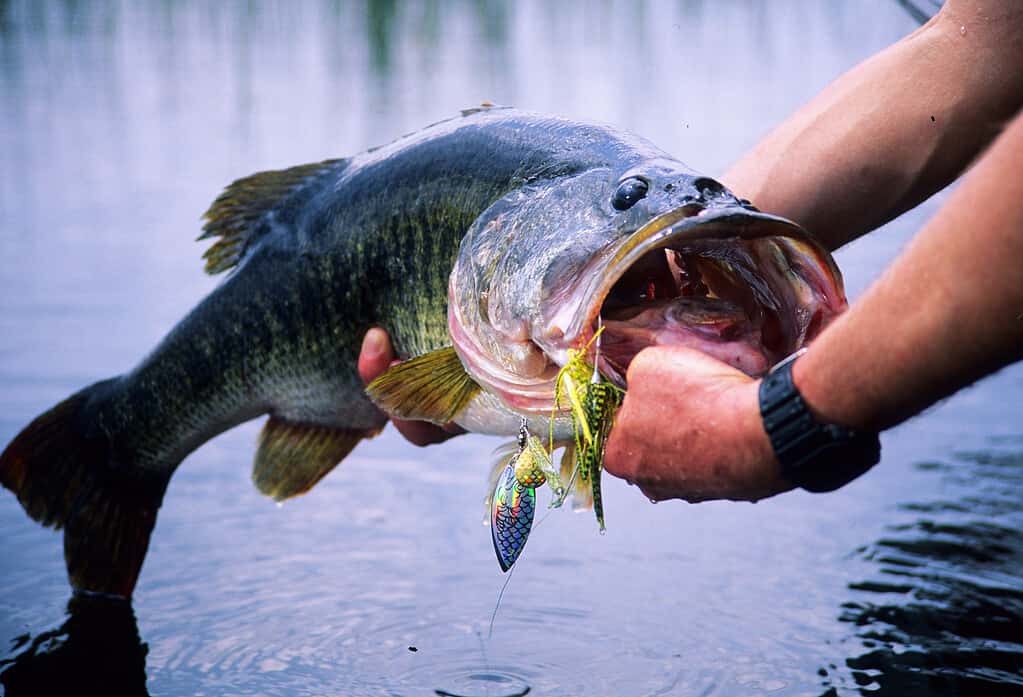
This 12-pound largemouth was caught on a spinner bait, just like Geary’s state-record fish.
©iStock.com/stammphoto
Where Is Lake Meads Overton Arm Located on a Map?
Lake Mead’s Overton Arm is located on the eastern side of Lake Mead, which is situated in both Arizona and Nevada. This particular arm of the lake can be found north of Las Vegas and west of Overton, Nevada. To get to this area, visitors can take Interstate 15 to Exit 93 (which is about an hour’s drive from Las Vegas) and then follow Northshore Road until they reach Echo Bay Road. From there, it’s just a short distance to the entrance of the Overton Arm. For those who prefer water access, several marinas around Lake Mead offer boat rentals for exploring this beautiful part of the lake.
What to Do With This Record Fish?
The new record-setting bass was a pre-spawn female. Geary said, “She had a big ol’ pot belly just full of eggs.” He also knew what he had to do.
Geary admitted he always thought he would mount a trophy-sized fish, should he ever catch one. But seeing this monster largemouth changed his mind. He knew he had to release this fish so it could spawn and then continue to swim the waters of Lake Mead that he loved so much.
The fisherman released his record fish at the Overton Beach Marina. Geary remarked, “It was so exhilarating watching it swim away.” He also noted how this catch had changed his mind on trophy fish, saying, “Those big fish like that, you gotta release ‘em.”
Geary passed away in 2021. His largemouth bass record lives on, as does the love for the outdoors that he instilled in friends and family.

Geary decided the record fish had to be released.
©Matt Jeppson/Shutterstock.com
Lake Mead’s Largemouth Bass
Like all largemouths, the behavior of Lake Mead’s bass is largely dictated by the changing seasons.
Nevada’s warm climate makes winter bass fishing much easier and more accessible than it is in more northerly regions. During the winter, Lake Mead bass can be found in deeper water. They often lurk in underwater structures. Deep diving jigs can be effective at triggering a winter bass to bite. Darker colors are a good choice in the lower-light environment of deep water.
The bass of Lake Mead can spawn as early as February and as late as May, depending on the conditions. It also depends on the fish’s location in the large lake. Geary caught his record-setting largemouth on March 8. The female had yet to spawn.
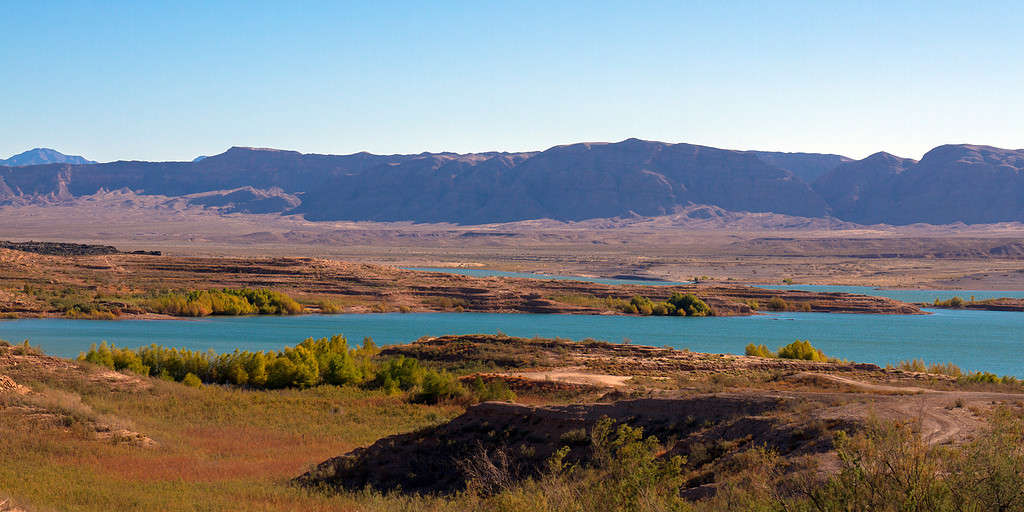
Early morning is the best time to fish Lake Mead, including the Overton Arm (pictured) where Geary landed his 12-pound largemouth.
©Martha Marks/Shutterstock.com
During the runup to the spawn, largemouths swim into the shallows. Soft plastic lures, such as worms, lizards, and crawdads, are a good option. Casting spinnerbaits around structure and laydowns is also effective. That is how Geary hooked his 12-pound largemouth.
Summer is all about timing. The oppressive Nevada heat sends bass to deep water and also limits their activity in the middle of the day. Early mornings are the best bet.
Fall is a great time to fish Lake Mead. The bass are active ahead of their slower winter pattern. Soft plastics, topwater lures, and crankbaits can all result in big catches.
Interestingly, Nevada ranked as the worst state in the U.S. for fishing in one survey. It’s pretty certain that Geary would have vehemently disagreed with those findings.
World Record Largemouth Bass
While Geary’s fish was a state record, the world record largemouth bass was over ten pounds heavier at 22 pounds, 4 ounces. There is actually a tie for the world record. The record was initially set by George W. Perry, who caught his mammoth largemouth on Georgia’s Montgomery Lake in 1932. Perry’s record would stand on its own for 77 years, but in 2009, Manabu Kurita landed a bass of the exact same weight on Lake Biwa in Shiga, Japan.
The photo featured at the top of this post is © iStock.com/Mr Bass Outdoors
Thank you for reading! Have some feedback for us? Contact the AZ Animals editorial team.



